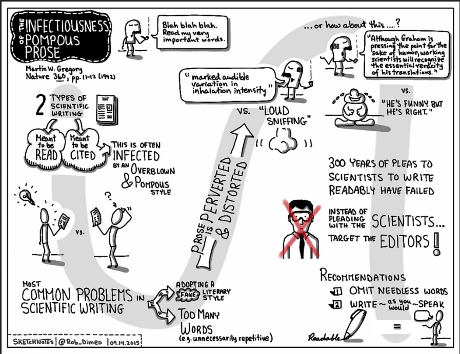The Future Of News Is Not An Article by Alexis Lloyd.
Alexis challenges readers to reconsider their assumptions about the nature of “articles.” Beginning with the model for articles that was taken over from traditional print media. Whatever appeared in an article yesterday must be re-created today if there is a new article on the same subject. Not surprising since print media lacks the means to transclude content from a prior article into a new one.
She saves her best argument for last:
…
A news organization publishes hundreds of articles a day, then starts all over the next day, recreating any redundant content each time. This approach is deeply shaped by the constraints of print media and seems unnecessary and strange when looked at from a natively digital perspective. Can you imagine if, every time something new happened in Syria, Wikipedia published a new Syria page, and in order to understand the bigger picture, you had to manually sift through hundreds of pages with overlapping information? The idea seems absurd in that context and yet, it is essentially what news publishers do every day.
…
While I agree fully with the advantages Alexis summarizes as Enhanced tools for journalists, Summarization and synthesis, and Adaptive Content (see her post), there are technical and non-technical roadblocks to such changes.
First and foremost, people are being paid to re-create redundant content everyday and their comfort levels, to say nothing about their remuneration for repetitive reporting of the same content will loom large in the adoption of the technology Alexis imagines.
I recall a disturbing story from a major paper where reporters didn’t share leads or research because of fear that other reporters would “scoop” them. That sort of protectionism isn’t limited to journalists. Rumor has it that Oracle sale reps refused to enter potential sales leads in a company wide database.
I don’t understand why that sort of pettiness is tolerated but be aware that it is, both in government and corporate environments.
Second and almost as importantly, Alexis needs raise the question of semantic ROI for any semantic technology. Take her point about adoption of the Semantic Web:
but have not seen universal adoption because of the labor costs involved in doing so.
To adopt a single level of semantic encoding for all content, without regard to its value, either historical or current use, is a sure budget buster. Perhaps the business community was playing closer attention to the Semantic Web than many of us thought, hence its adoption failure.
Some content may need machine driven encoding, more valuable content may require human supervision and/or encoding and some content may not be worth encoding at all. Depends on your ROI model.
I should mention that the Semantic Web manages statements about statements (in its or other semantic systems) poorly. (AKA, “facts about facts.”) Although I hate to use the term “facts.” The very notion of “facts” is misleading and tricky under the best of circumstances.
However universal (universal = among people you know) knowledge of a “fact” may seem, the better argument is that it is only a “fact” from a particular point of view. Semantic Web based systems have difficulty with such concepts.
Third, and not mentioned by Alexis, is that semantic systems should capture and preserve trails created by information explorers. Reporters at the New York Times use databases everyday, but each search starts from scratch.
If re-making redundant information over and over again is absurd, repeating the same searches (more or less successfully) over and over again is insane.
Capturing search trails as data would enrich existing databases, especially if searchers could annotate their trails and data they encounter along the way. The more intensively searched a resource becomes, the richer its semantics. As it is today, all the effort of searchers is lost at the end of each search.
Alexis is right, let’s stop entombing knowledge in articles, papers, posts and books. It won’t be quick or easy, but worthwhile journeys rarely are.
I first saw this in a tweet by Tim Strehle.

